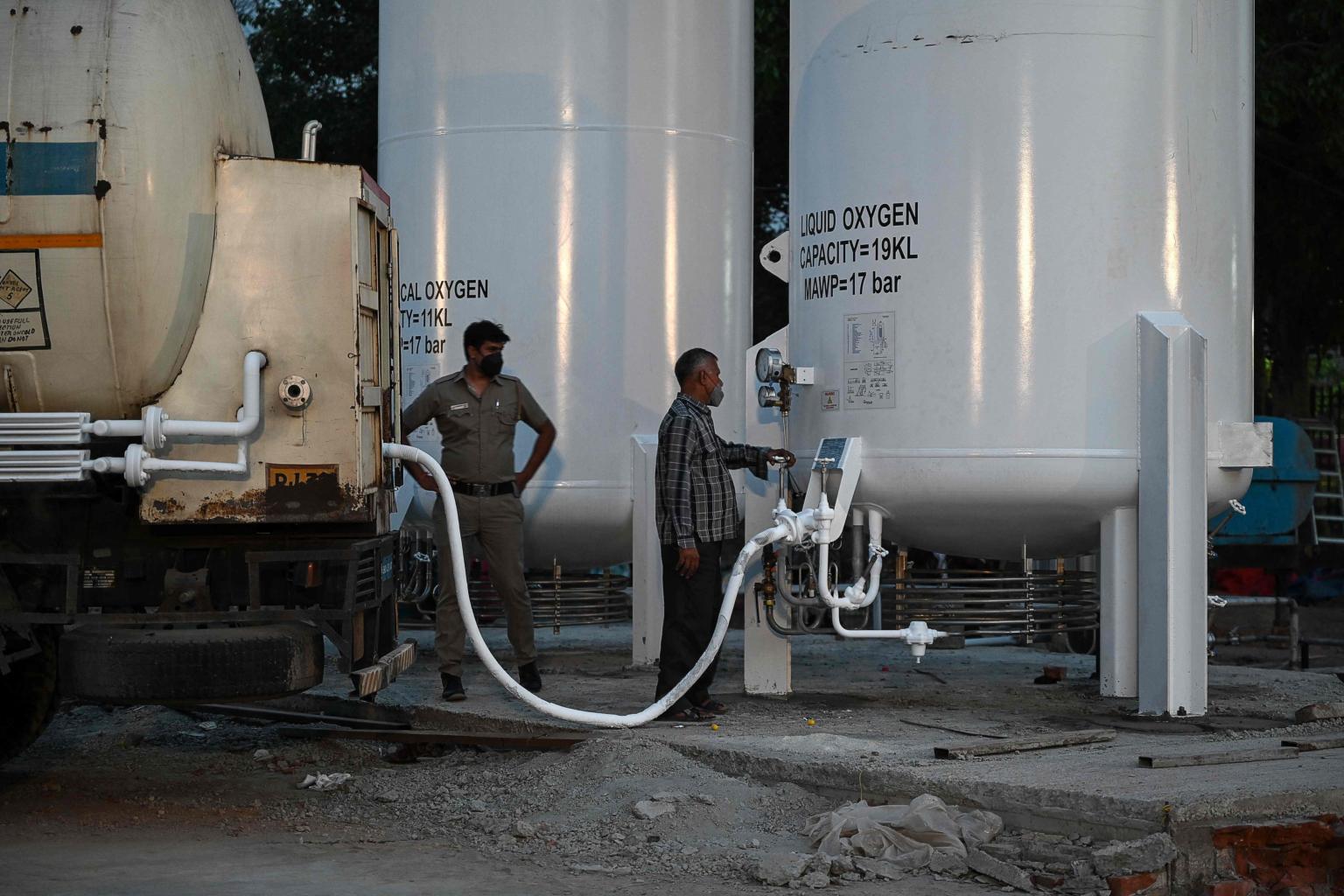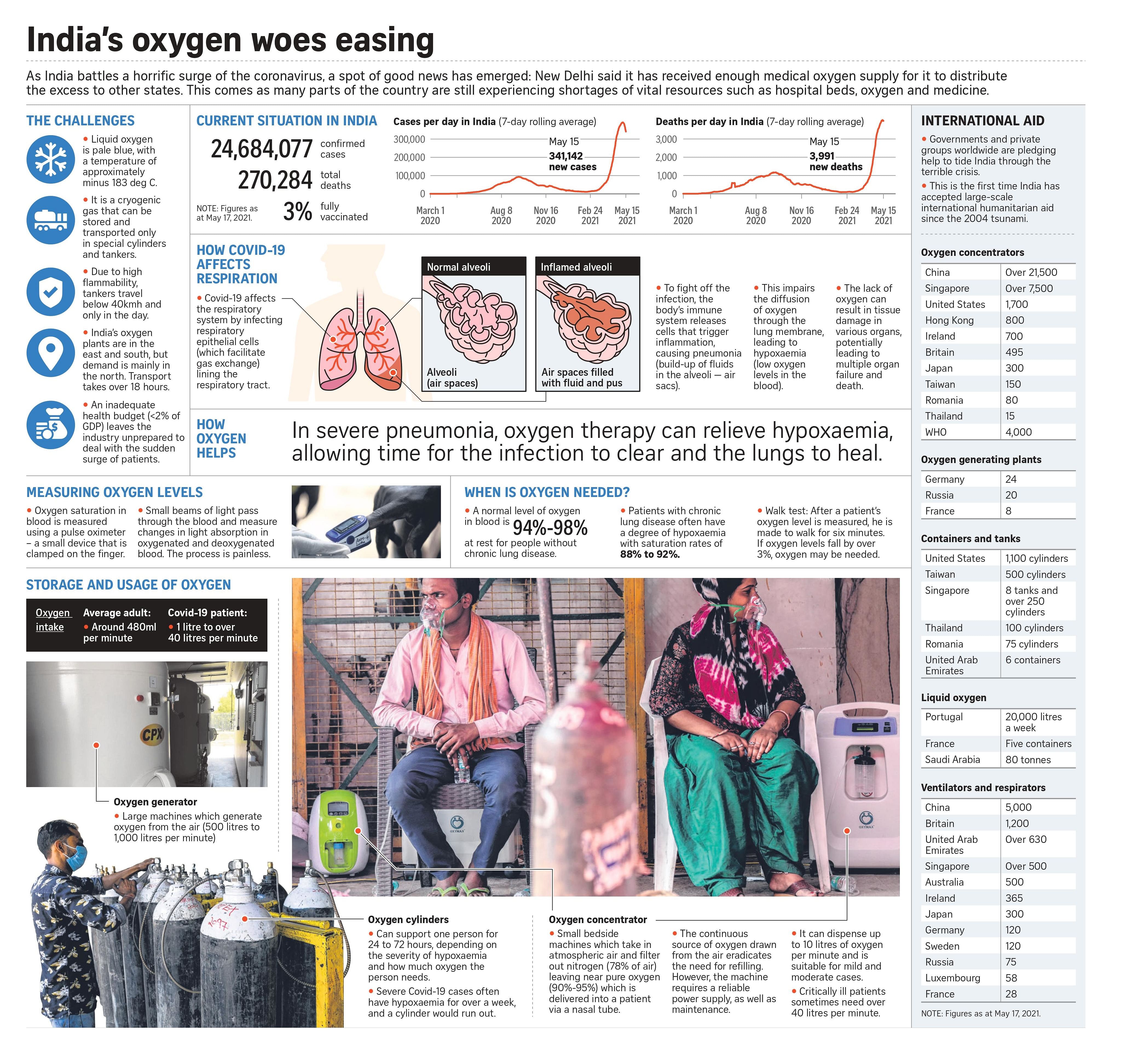Coronavirus: Oxygen supply in New Delhi has stabilised, allowing it to be shared elsewhere
Sign up now: Get insights on Asia's fast-moving developments

Workers load oxygen into newly installed tanks to be used for Covid-19 patients in New Delhi on May 12, 2021.
PHOTO: AFP
Follow topic:
NEW DELHI (NYTIMES) - After shortages in oxygen in New Delhi led to scores of people dying in hospitals, officials said there was now enough supply in the Indian capital to start sharing a surplus of the life-saving gas to needier parts of the country.
For weeks, the New Delhi government appealed to Prime Minister Narendra Modi for a larger share of India's oxygen reserves, with the battle for air ending up in the nation's highest court.
On Thursday (May 13), just days after receiving the amount it had requested, New Delhi's second-highest official Manish Sisodia said the city's demand had fallen and its excess supply should be reallocated.
"The number of cases is coming down, hospital bed occupancy is coming down, and demand for oxygen too is down," Mr Sisodia told The New York Times.
It was an indication that the crisis in the capital might be reaching a peak.
The oxygen shortage in New Delhi began last month and has been linked to dozens of deaths, in and out of hospitals.
Healthcare facilities and crematories were overwhelmed and medical professionals and residents were left scrambling for scarce resources.
Thousands of people in the city of 20 million stood in line at oxygen refilling stations, bringing cylinders into hospitals for friends and family or hoarding them at home in case the need arose.
The rise of new coronavirus infections in India has slowed. But, in pattern seen in nation after nation battered by the virus, death rates often plateau a few weeks later.
And with the virus spreading in low-income rural areas, the overall crisis shows no sign of abating.
As at Wednesday, the official death toll had surpassed 258,000, although experts suspect the true number to be much higher.
As the smoke from New Delhi crematories starts to clear, dozens of bodies have surfaced along the holy Ganges River in the states of Uttar Pradesh and Bihar.
Mr Krishna Dutt Mishra, an ambulance driver in the Bihari village of Chausa, said that poor people were disposing of bodies in the river because the cost of cremations had become prohibitively expensive.
On Friday, Indian news media showed bodies wrapped in cloth of the saffron colour, considered auspicious in Hinduism, buried in shallow graves on the sandy banks of the Ganges River in the Unnao district of Uttar Pradesh.
Ms Priyanka Gandhi, a leader of the opposition Indian National Congress party, called for a High Court investigation, saying that what was happening in Uttar Pradesh was "inhuman and criminal".


